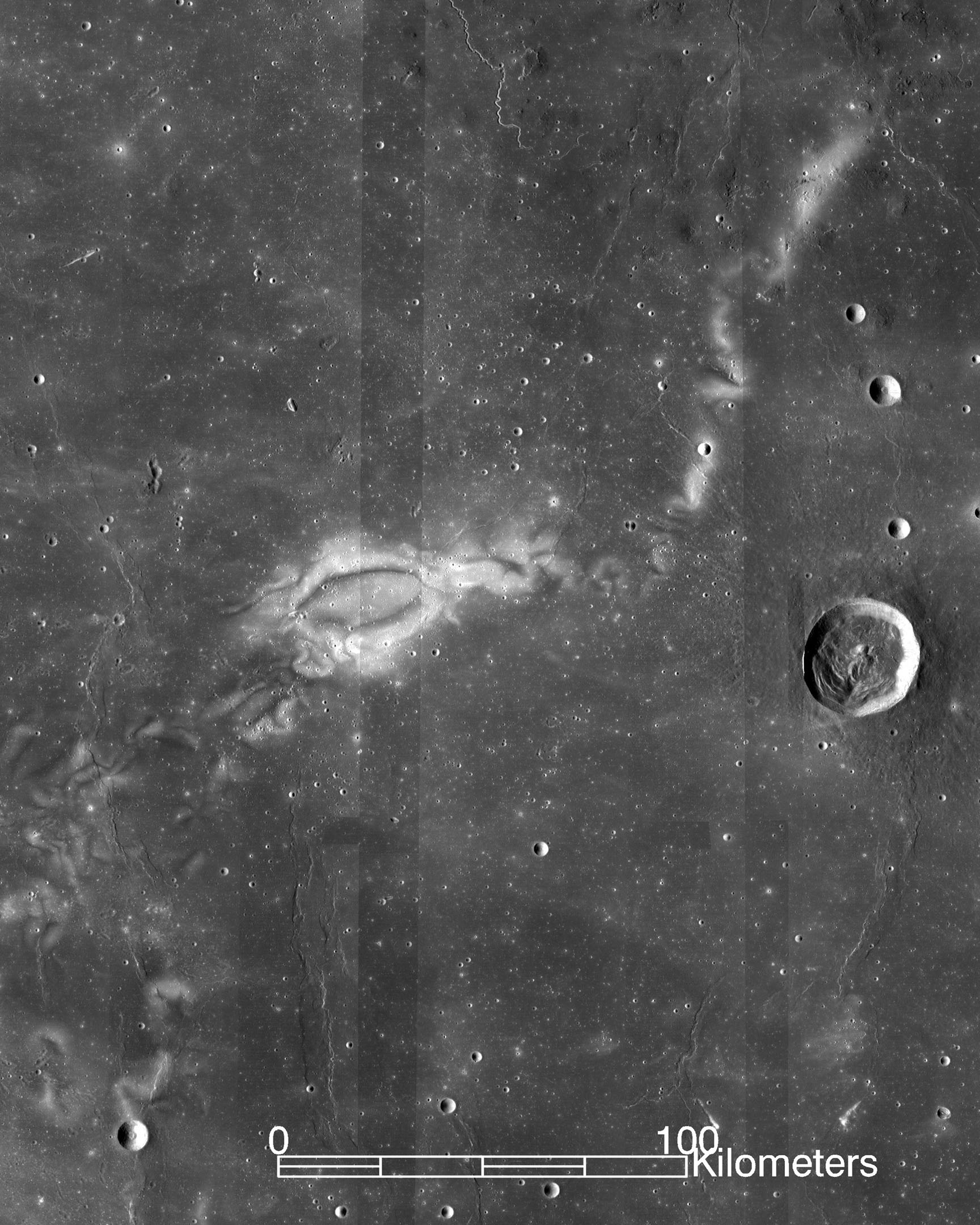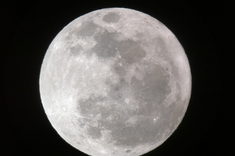
This image from NASA’s Lunar Reconnaissance Orbiter shows the Reiner Gamma lunar swirl.
Credit: NASA LRO WAC science team
An avalanche of new research illuminates the strange swirls of light and dark peppering the surface of the moon, suggesting that the weak magnetic field Earth’s only natural satellite offers a surprisingly strong shield to parts of the lunar crust.
Many ponder the mysteries of Europa’s moon-wide, ice-covered sea or doomed Phobos’ strange composition , but Earth’s moon holds secrets even closer to home. Researchers have long wondered about the curlicue patterns that can be tens of miles across on the moon’s pockmarked surface.
“These patterns, called ‘lunar swirls,’ appear almost painted on the surface of the moon,” John Keller, a researcher at NASA’s Goddard Space Flight Center in Maryland, said in a statement . “They are unique; we’ve only seen these features on the moon, and their origin has remained a mystery since their discovery.” Keller is a project scientist for the NASA’s Lunar Reconnaissance Orbiter (LRO) mission. [Amazing Moon Photos from NASA’s Lunar Reconnaissance Orbiter ]
The bright patches of the swirls seem to be less weathered and worn away than the dark parts, and the swirls occur in places where the moon’s surface is magnetized , according to previous research. From those observations, scientists have developed three main hypotheses about the swirls’ origin, NASA officials said in the statement: that the moon’s magnetic field protected parts of the surface from abrasive solar wind, that dust settled in alignment with the magnetic field, or that plumes of material from comet impacts caused both the swirls and the magnetic fields.
Unlike Earth, whose swirling, metal core generates a globe-wide magnetic field, the moon does not (currently) generate a widespread field . Instead, patches of crust are magnetized in irregular patterns. While the protective-field explanation seemed plausible, researchers didn’t understand how those weak magnetic fields could have provided a strong enough protective effect on the lunar surface.
“The problem with the magnetic-shield idea is that the embedded magnetic fields on the moon are very weak — about 300 times weaker than Earth’s magnetic field,” Bill Farrell, head of NASA Goddard’s DREAM2 Center for Space Environments, said in the statement.
Three new papers from DREAM2 researchers describe models for how the weak field could in fact protect the surface from the unceasing solar wind, and new observations from the LRO further support the conclusion.
The sun’s fierce activity sends a constant stream of energetic, charged particles out into the solar system, bombarding the planets, moons and asteroids that dwell there. Earth’s magnetic field deflects most of these particles from the planet’s surface; their interactions with that field and the particles in the atmosphere cause vivid auroras near the north and south poles. The moon, on the other hand, stands mostly unprotected as it’s constantly showered by the energetic particles, which can travel from 200 to 500 mph (300 to 800 km/h) depending on the sun’s level of activity.
According to the new models, even the moon’s weak surface-magnetism can generate a strong electrical field when the solar wind flows through, and that electrical field is able to deflect the particles away from parts of the lunar surface. So the whirls of magnetism are inscribed on the moon in the form of lighter areas that are less worn away by the sun’s pelting wind.

0 of 10 questions complete
New observations from the LRO seem to support this hypothesis, Keller said. “Until you have somebody making measurements on the lunar surface, we may not get a definitive answer. But the new observations that analyze the swirls in ultraviolet and far-ultraviolet light are consistent with earlier observations that indicate the swirls are less weathered than their surroundings,” he said.
To understand the process better in the meantime, the teams hope to fine-tune the models to account for different times of day, for when the solar wind comes from different directions, as well as for varying solar-wind strength, officials said in the statement. The researchers could also model the weathering effects of space and the solar wind, the statement said. The moon orbiter team, for its part, plans to adjust one of the orbiter’s instruments to improve the clarity of its daytime observations, officials said.
The new modeling work was detailed in the journal Icarus in March , in the Journal of Geophysical Research: Space Physics in June and in the Journal of Geophysical Research: Planets in November ; the LRO observations were detailed in Icarus in January and in February .
Email Sarah Lewin at slewin@space.com or follow her @SarahExplains . Follow us @Spacedotcom , Facebook and Google+ . Original article on Space.com .

Comments are closed.